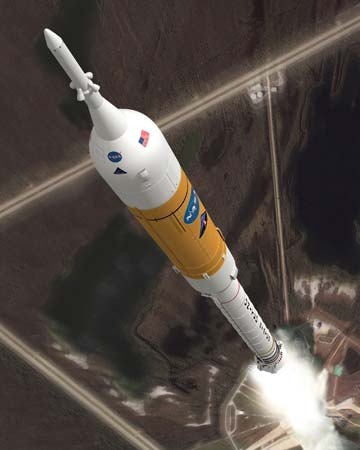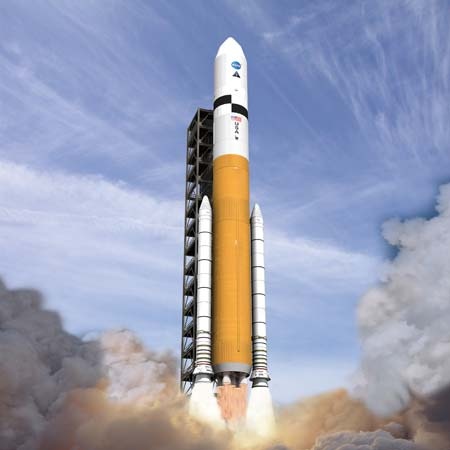Ares
Greek mythology
 in Greek religion, god of war or, more properly, the spirit of battle. Unlike his Roman counterpart, Mars (q.v.), he was never very popular, and his worship was not extensive in Greece. He represented the distasteful aspects of brutal warfare and slaughter. From at least the time of Homer, who established him as the son of the chief god, Zeus, and Hera, his consort, Ares was one of the Olympian deities; his fellow gods and even his parents, however, were not fond of him (Iliad v, 889 ff.). Nonetheless, he was accompanied in battle, by his sister Eris (Strife) and his sons (by Aphrodite) Phobos and Deimos (Panic and Rout). Also associated with him were two lesser war deities: Enyalius, who is virtually identical with Ares himself, and Enyo, a female counterpart.
in Greek religion, god of war or, more properly, the spirit of battle. Unlike his Roman counterpart, Mars (q.v.), he was never very popular, and his worship was not extensive in Greece. He represented the distasteful aspects of brutal warfare and slaughter. From at least the time of Homer, who established him as the son of the chief god, Zeus, and Hera, his consort, Ares was one of the Olympian deities; his fellow gods and even his parents, however, were not fond of him (Iliad v, 889 ff.). Nonetheless, he was accompanied in battle, by his sister Eris (Strife) and his sons (by Aphrodite) Phobos and Deimos (Panic and Rout). Also associated with him were two lesser war deities: Enyalius, who is virtually identical with Ares himself, and Enyo, a female counterpart.Ares' worship was largely in the northern areas of Greece, and, although devoid of the social, moral, and theological associations usual with major deities, his cult had many interesting local features. At Sparta, in early times, at least, human sacrifices were made to him from among the prisoners of war. At Sparta also a nocturnal offering of dogs—an unusual sacrificial victim, which might indicate a chthonic (infernal) deity—was made to him as Enyalius. During his festival at Geronthrae in Laconia, no women were allowed in the sacred grove, but at Tegea he was honoured in a special women's sacrifice as Gynaikothoinas (“Entertainer of Women”). At Athens he had a temple at the foot of the Areopagus (“Ares' Hill”).
The mythology surrounding the figure of Ares is not extensive. He was associated with Aphrodite from earliest times; in fact, Aphrodite was known locally (e.g., at Sparta) as a war goddess, apparently an early facet of her character. Occasionally, Aphrodite was Ares' legitimate wife, and by her he fathered Deimos, Phobos (who accompanied him into battle), Harmonia, and—as first told by Simonides in the 6th century BC— Eros, god of love. By Aglauros, the daughter of Cecrops, he was the father of Alcippe. He was the sire of at least three of Heracles' adversaries: Cycnus, Lycaon, and Diomedes of Thrace. On vases, Ares is usually the typical armed warrior. The Parthenon frieze contains a group of Olympians, among whom Ares, in unwarlike garb, has been tentatively identified. He also appears on the great frieze of the altar at Pergamum.
United States launch vehicles
 family of two launch vehicles (launch vehicle), Ares I and Ares V, being built for the Constellation (Constellation program) program, the manned U.S. spaceflight program scheduled to succeed the space shuttle program and focus on missions to the moon and Mars. In June 2006 the National Aeronautics and Space Administration (NASA) named the launchers Ares, after the Greek counterpart of the Roman god Mars, in order to symbolize the long-term objective of mounting a mission to the red planet. The Roman numerals assigned to the launchers are a tribute to the Saturn vehicles of the Apollo program.
family of two launch vehicles (launch vehicle), Ares I and Ares V, being built for the Constellation (Constellation program) program, the manned U.S. spaceflight program scheduled to succeed the space shuttle program and focus on missions to the moon and Mars. In June 2006 the National Aeronautics and Space Administration (NASA) named the launchers Ares, after the Greek counterpart of the Roman god Mars, in order to symbolize the long-term objective of mounting a mission to the red planet. The Roman numerals assigned to the launchers are a tribute to the Saturn vehicles of the Apollo program.A number of lift options were considered for the Constellation program, including the use of existing Delta IV and the Atlas (Atlas rocket) V launchers. However, it was ultimately decided to modify proven space shuttle components—in particular, the space shuttle main engine (SSME), the solid rocket booster (SRB), and the external tank (ET)—in order to create new vehicles.
The two-stage Ares I will launch the Orion spacecraft with either six astronauts (astronaut) to the International Space Station (ISS) or four to the Moon. Its first stage will be a five-segment SRB based on the shuttle's four-segment version. An upper stage will be powered by a modernized version of the J-2 hydrogen-burning engine developed for the upper stages of the Saturn launch vehicles. On top of this upper stage will be the Orion spacecraft, which will have an escape tower on its apex. These components give the 97.8-metre- (321-foot-) tall Ares I its distinctive profile, earning it the nickname “the stick.” The first stage of Ares I will be recoverable (as is the case with the space shuttle's SRBs), but the upper stage will be expendable. Ares I will be able to deliver a payload of some 25,000 kg (55,000 pounds) to low Earth orbit.
The first Ares I test vehicle will be launched in 2009. This will comprise a surplus shuttle SRB fitted with an inert fifth segment, a nonfunctional upper stage, and a model of Orion outfitted with instrumentation to report on conditions in flight. A second test in 2012 will use a functional upper stage and spacecraft. The first launch with a crew is scheduled for 2015; the spacecraft will visit the ISS. Lunar missions are planned to occur by 2020 and missions to Mars as soon as practicable thereafter.
 Ares V initially will launch the Altair lunar lander but later will deliver to low Earth orbit the components of the large vehicle that will fly to Mars. It will be 110 metres (358 feet) tall and will have a pair of SRBs similar to that of the Ares I and strapped to a core stage that will consist of an enlarged ET with a cluster of six RS-68 engines at its base. These engines were developed for the Delta IV and have a sea-level thrust of 2,890,000 newtons (650,000 pounds) each. The second stage will be powered by the same engine as the Ares I upper stage. The payload to low Earth orbit will be 130,000 kg (287,000 pounds).
Ares V initially will launch the Altair lunar lander but later will deliver to low Earth orbit the components of the large vehicle that will fly to Mars. It will be 110 metres (358 feet) tall and will have a pair of SRBs similar to that of the Ares I and strapped to a core stage that will consist of an enlarged ET with a cluster of six RS-68 engines at its base. These engines were developed for the Delta IV and have a sea-level thrust of 2,890,000 newtons (650,000 pounds) each. The second stage will be powered by the same engine as the Ares I upper stage. The payload to low Earth orbit will be 130,000 kg (287,000 pounds).- John Hays, Jr. Hammond
- John Hay Whitney
- John Heathcoat
- John Heisman
- John Held, Jr.
- John Heminge
- John Henninger Reagan
- John Henry
- John Henry Anderson
- John Henry Belter
- John Henry Comstock
- John Henry Dallmeyer
- John Henry Hobart
- John Henry Holland
- John Henry Lloyd
- John Henry Newman
- John Henry Patterson
- John Henry Poynting
- John Henry Taylor
- John Henry Twachtman
- John Henry Wigmore
- John Henry Williams
- John Herman, Jr. Randall
- John Herman Randall, Jr.
- John Hersey